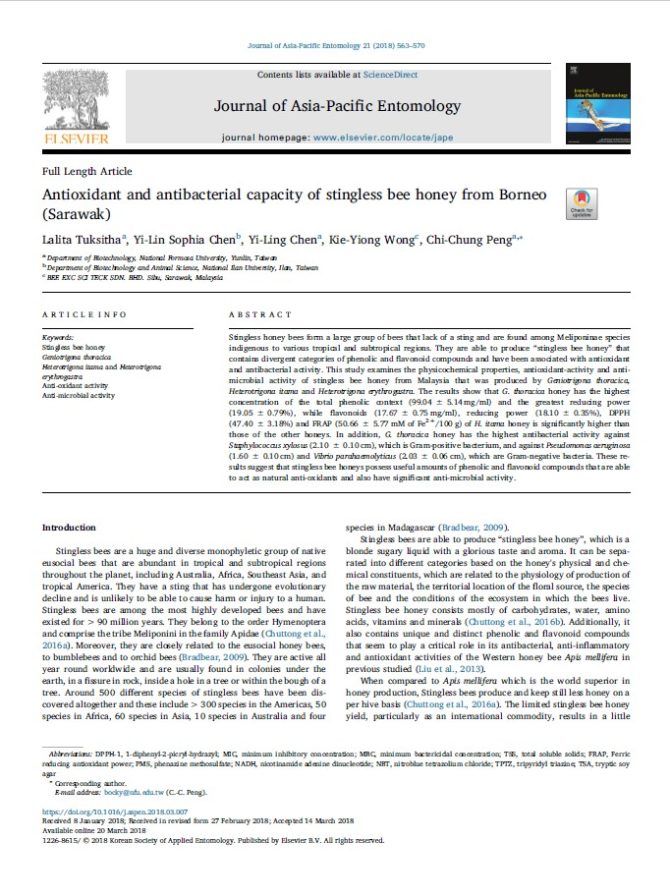Antioxidant and antibacterial capacity of stingless bee honey from Borneo (Sarawak)
Stingless honey bees form a large group of bees that lack of a sting and are found among Meliponinae species indigenous to various tropical and subtropical regions. They are able to produce “stingless bee honey” that contains divergent categories of phenolic and flavonoid compounds and have been associated with antioxidant and antibacterial activity. This study examines the physicochemical properties, antioxidant-activity and antimicrobial activity of stingless bee honey from Malaysia that was produced by Geniotrigona thoracica, Heterotrigona itama and Heterotrigona erythrogastra. The results show that G. thoracica honey has the highest concentration of the total phenolic context (99.04 ± 5.14 mg/ml) and the greatest reducing power (19.05 ± 0.79%), while flavonoids (17.67 ± 0.75 mg/ml), reducing power (18.10 ± 0.35%), DPPH (47.40 ± 3.18%) and FRAP (50.66 ± 5.77mM of Fe2+/100 g) of H. itama honey is significantly higher than those of the other honeys. In addition, G. thoracica honey has the highest antibacterial activity against Staphylococcus xylosus (2.10 ± 0.10 cm), which is Gram-positive bacterium, and against Pseudomonas aeruginosa (1.60 ± 0.10 cm) and Vibrio parahaemolyticus (2.03 ± 0.06 cm), which are Gram-negative bacteria. These results suggest that stingless bee honeys possess useful amounts of phenolic and flavonoid compounds that are able to act as natural anti-oxidants and also have significant anti-microbial activity.
- Country
- Chinese Taipei (Taiwan)
- Organisation
- Hualien District Agricultural Research and Extension Station (HDARES)
- Publisher
- Journal of Asia-Pacific Entomology
- Publication date
- August 1970

